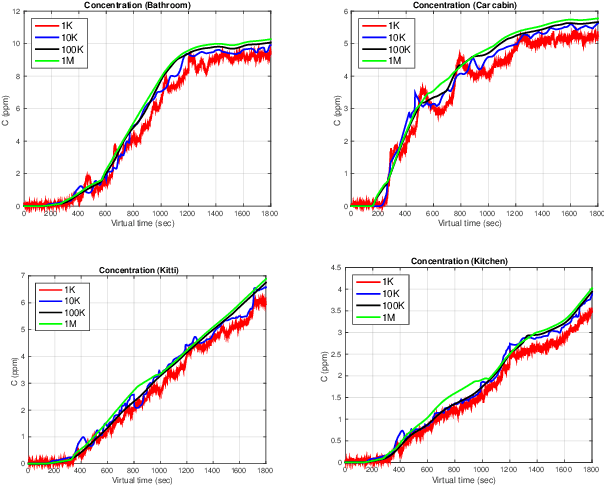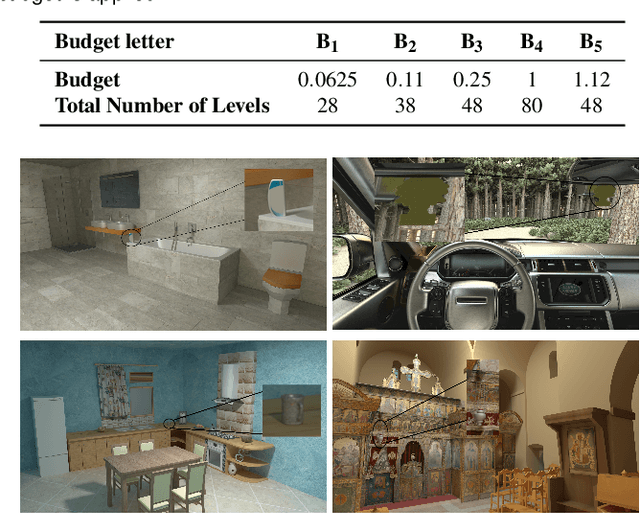Alan Chalmers
Deep Controllable Backlight Dimming
Aug 19, 2020



Abstract:Dual-panel displays require local dimming algorithms in order to reproduce content with high fidelity and high dynamic range. In this work, a novel deep learning based local dimming method is proposed for rendering HDR images on dual-panel HDR displays. The method uses a Convolutional Neural Network to predict backlight values, using as input the HDR image that is to be displayed. The model is designed and trained via a controllable power parameter that allows a user to trade off between power and quality. The proposed method is evaluated against six other methods on a test set of 105 HDR images, using a variety of quantitative quality metrics. Results demonstrate improved display quality and better power consumption when using the proposed method compared to the best alternatives.
Audio-Visual-Olfactory Resource Allocation for Tri-modal Virtual Environments
Feb 07, 2020



Abstract:Virtual Environments (VEs) provide the opportunity to simulate a wide range of applications, from training to entertainment, in a safe and controlled manner. For applications which require realistic representations of real world environments, the VEs need to provide multiple, physically accurate sensory stimuli. However, simulating all the senses that comprise the human sensory system (HSS) is a task that requires significant computational resources. Since it is intractable to deliver all senses at the highest quality, we propose a resource distribution scheme in order to achieve an optimal perceptual experience within the given computational budgets. This paper investigates resource balancing for multi-modal scenarios composed of aural, visual and olfactory stimuli. Three experimental studies were conducted. The first experiment identified perceptual boundaries for olfactory computation. In the second experiment, participants (N=25) were asked, across a fixed number of budgets (M=5), to identify what they perceived to be the best visual, acoustic and olfactory stimulus quality for a given computational budget. Results demonstrate that participants tend to prioritise visual quality compared to other sensory stimuli. However, as the budget size is increased, users prefer a balanced distribution of resources with an increased preference for having smell impulses in the VE. Based on the collected data, a quality prediction model is proposed and its accuracy is validated against previously unused budgets and an untested scenario in a third and final experiment.
 Add to Chrome
Add to Chrome Add to Firefox
Add to Firefox Add to Edge
Add to Edge